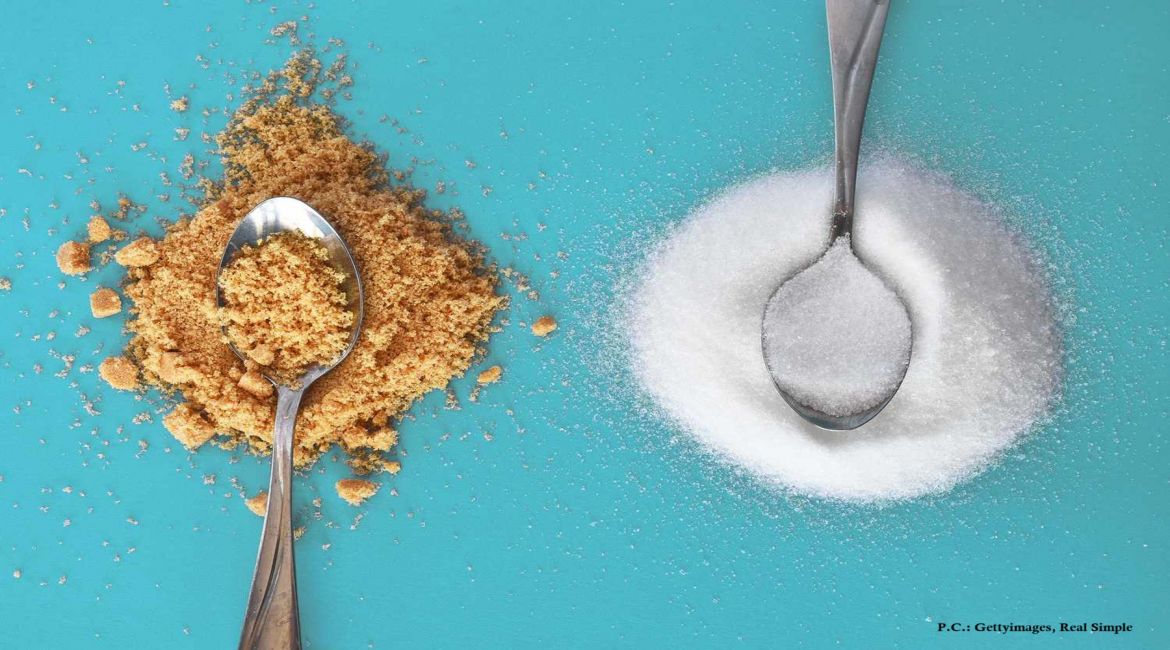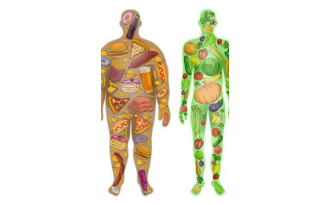About Sugar: Brown Sugar vs. White Sugar

The most commercially and traditionally used sweetener globally is sugar. It is an ingredient that is essential in most sweet products. Several forms of sugar are available on the market, and different types are used for various purposes. Sometimes, people face challenges in choosing the right one for the appropriate use.
As we all know, excess sugar or sugary products negatively affect our bodies. Therefore, it is important to have a broad understanding of the different types of sugar, their uses, and their differences.
In this article, we discuss sugar, its types, uses, the differences between white sugar and brown sugar, and their nutritional value.
|
In this article What is white sugar and brown sugar? Difference between white sugar and brown sugar Nutritional value of both sugars |
What is sugar?
Sugar is a type of soluble carbohydrate. All kinds of sweet carbohydrates are considered sugar. Simple carbohydrate is called monosaccharides, like glucose, fructose, and galactose. Complex carbohydrates, known as disaccharides or double sugars, are made by two bonded monosaccharides; like sucrose (glucose & fructose), lactose (glucose & galactose), and maltose (two molecules of glucose). Sugar is naturally found in fruits, dairy products, vegetables, and honey.
What is white sugar and brown sugar?
Both are different forms of sucrose. Sucrose is naturally found in sugar cane and sugar beet.
First, the juices are extracted from both crops, and then the juice is purified and heated to form a concentrated brown syrup called molasses.
Next, a small amount of seed crystals is added to the syrup, and it is further boiled to form large sugar crystals. After this, the crystals are separated from the molasses using centrifuges, a spinning process that helps separate the crystals from the liquid.
After separation, the decolorization process occurs by filtering the sugar through bone char, activated carbon, or ion-exchange resin.
Lastly, the sugar crystals are dried in a hot air dryer to produce granulated sugar crystals, known as table sugar or white sugar.
Brown sugar is a combination of white sugar and molasses. The presence of molasses produces the brown color.
Difference between white sugar and brown sugar:
The main difference between them lies in their production process. White sugar is a fully refined form of sugar, whereas brown sugar retains molasses, which contributes to its color and flavor.
Uses:
White sugar is used as a sweetener, widely utilized in various desserts, sweet beverages, and cooking to enhance the texture and color of food, while also acting as a preservative.
Brown sugar is also used as a sweetener. Its molasses content adds moisture, resulting in moister and denser baked goods. Additionally, it enhances the color and flavor in cooking and baking.
Choosing between white sugar and brown sugar is a matter of personal preference, though the taste of both sugars differs slightly.
Nutritional value of both sugars:
White sugar and brown sugar are manufactured from the same crops, such as sugar cane or sugar beet.
Due to the presence of molasses, brown sugar's nutritional value is slightly higher than that of white sugar.
The calorie differences between the two types of sugar are minimal. One teaspoon (4-5 grams) of brown sugar provides approximately 15 calories, while the same amount of white sugar contains approximately 16.3 calories.
Furthermore, brown sugar contains small amounts of other minerals such as calcium, iron, phosphorus, and potassium, owing to the presence of molasses.
Which one to choose?
Taste and flavor-wise, both sugars are slightly different. Therefore, when it comes to choosing between them, it is completely personal and also depends on the purpose of use.
If you wish to select one based on nutritional benefits, then you must remember that both are sugars. Yes, the nutritional values of brown sugar are slightly higher compared to white sugar, but the difference is minimal. The additional nutrients present in brown sugar are not sufficient to significantly impact your body.
Therefore, it is better to choose one based on your preference and purpose.
What is the sugar intake recommendation?
According to the NHS, UK, the free sugar intake should not exceed more than 5% of the total calories you derive from foods and drinks.
According to the American Heart Association, the daily free sugar consumption level is 37.5 g per day (150 calories, 9 teaspoons) for men and 25 g per day (100 calories, 6 teaspoons) for women.
According to a recent report published in TOI, ICMR & NIN, India advises avoiding sugar as much as possible. Only 20-25 grams of free sugar are recommended for Indian adults.
Bottom line:
Choosing white sugar or brown sugar is a personal decision, but you must remember that they are different forms of sugar. Excessive sugar intake is not a healthy choice, and it negatively affects your health. Therefore, it is always recommended to avoid or limit the intake of sugar or sugary products.
Further references:
- https://www.healthline.com/nutrition/brown-sugar-vs-white-sugar
- https://www.eatingwell.com/article/8005813/brown-sugar-vs-white-sugar-whats-the-difference/
- https://www.medicalnewstoday.com/articles/brown-sugar-vs-white-sugar












0 Comments